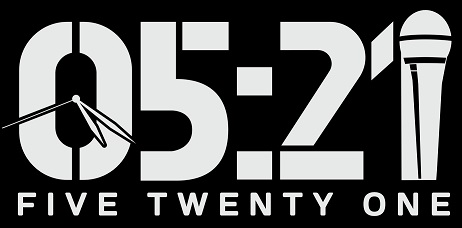Your basket is currently empty!
IFRS 16 Leases
RSM US LLP is a limited liability partnership and the U.S. member firm of RSM International, a global network of independent assurance, tax and consulting firms. The member firms of RSM International collaborate to provide services to global clients, but are separate and distinct legal entities that cannot obligate each other. Each member firm is responsible only for its own acts and omissions, and not those of any other party. Visit rsmus.com/about for more information regarding RSM US LLP and RSM International. The best way to look at it is to consider (1) the total lease payments, compared with the initial fair value of the asset; and (2) the lease term, compared with the expected useful life of the asset.
It’s important to remember that you don’t always charge for a full year. For example, if a lease was not entered into until 1 March, only 10 months’ cost should be included in the statement of comprehensive income for the year ended 31 December, not the full year. IFRS Sustainability Standards are developed to enhance investor-company dialogue so that investors receive decision-useful, globally comparable sustainability-related disclosures that meet their information needs. The ISSB is supported by technical staff and a range of advisory bodies. PwC partner Heather Horn and two directors, all from PwC’s National office, cover common leasing presentation and disclosure questions.
- Straight-line depreciation expense must be recorded for the equipment that is leased.
- ASC 842 defines leases as contracts, or portions of contracts, granting “control” of an identifiable asset for a specific period of time in exchange for payment.
- In this podcast we’ll discuss the impact of the current uncertain economic environment on lease accounting.
- Per the guidance, existing capital leases will not require adjustment or remeasurement upon transition, provided they were accounted for correctly under ASC 840.
- Your solution’s out-of-the-box forecasting reports should be able to help determine the impact your lease portfolio has on important reporting metrics, such as earnings per share and EBITDA.
ASC 842 offers practical expedients that can be elected by certain entities or in certain arrangements. For a comprehensive discussion of the lease accounting guidance in ASC 842, see Deloitte’s Roadmap Leases. The legal owner (lessor) allows the user (lessee) to enjoy the use of the asset, in return for periodic cash instalments. When none of these additional criteria are met, the lessor classifies a lease as an operating lease. IFRS Accounting Standards are, in effect, a global accounting language—companies in more than 140 jurisdictions are required to use them when reporting on their financial health. The IASB is supported by technical staff and a range of advisory bodies.
Deloitte refers to one or more of Deloitte Touche Tohmatsu Limited, a UK private company limited by guarantee (“DTTL”), its network of member firms, and their related entities. DTTL and each of its member firms are legally separate and independent entities. DTTL (also referred to as “Deloitte Global”) does not provide services to clients. In the United States, Deloitte refers to one or more of the US member firms of DTTL, their related entities that operate using the “Deloitte” name in the United States and their respective affiliates. Certain services may not be available to attest clients under the rules and regulations of public accounting. Please see /about to learn more about our global network of member firms.
More opportunities for lease management
Public and private companies have different effective dates for the new lease accounting standard. For public companies, the FASB standard was effective for reporting periods beginning subsequent to December 15, 2018. For calendar year-end companies, this means the standard was adopted on January 1, 2019. Leases are contracts in which the property/asset owner allows another party to use the property/asset in exchange for some consideration, usually money or other assets.
This material has been prepared for general informational purposes only and is not intended to be relied upon as accounting, tax, or other professional advice. Straight-line depreciation expense must be recorded for the equipment that is leased. This is based on the calculated equipment cost of $164,995, which is apportioned equally over eight years at $20,624 per year. This content outlines initial considerations meriting further consultation with life sciences organizations, healthcare organizations, clinicians, and legal advisors to explore feasibility and risks.
How do you record a lease in accounting?
The lender holds the title of the asset and the lease payments made by the lessee are collected by the lessor. The lessor is then responsible for sending payments to the lender. Existing capital leases will not require adjustment or remeasurement upon transition, but they will be referred to as finance leases. Our FRD publication on lease accounting has been updated for recent standard setting and to further enhance and clarify our interpretive guidance in several areas. Refer to Appendix E of the publication for a summary of important changes. PwC refers to the US member firm or one of its subsidiaries or affiliates, and may sometimes refer to the PwC network.
Leases: Process for Identifying a Lease
Start with a free account to explore 20+ always-free courses and hundreds of finance templates and cheat sheets. Understand the requirements of the new leasing standard, FASB ASC 842, and plan an efficient transition with Deloitte’s Lease Standard Implementation Workshop. The information contained herein is of a general nature and is not intended to address the circumstances of any lease accounting guide particular individual or entity. Although we endeavor to provide accurate and timely information, there can be no guarantee that such information is accurate as of the date it is received or that it will continue to be accurate in the future. No one should act upon such information without appropriate professional advice after a thorough examination of the particular situation.
The inability to set up an alert to notify the accounting department when periodic rent should have been abated on every anniversary of the lease led to multiple years of steep unnecessary payments. Topic 842 offers elections meant to ease the transition process, referred to as practical expedients. Some of the practical expedients under ASC 842 include grandfathering of lease classification, combining lease and non-lease components, and not restating the prior year’s financials. In a sale-leaseback transaction, the lessee sells the asset to the buyer/lessor and enters into an agreement to lease the asset back from the buyer/lessor.
This separation between the asset’s ownership (lessor) and control of the asset (lessee) is referred to as the agency cost of leasing. A lease is an arrangement under which a lessor agrees to allow a lessee to control the use of identified property, plant, and equipment for a stated period of time in exchange for one or more payments. There are several types of lease designations, which differ if an entity is the lessee or the lessor.
ASC 842 defines leases as contracts, or portions of contracts, granting “control” of an identifiable asset for a specific period of time in exchange for payment. The term “control” carries a distinct meaning in this https://turbo-tax.org/ definition. To demonstrate control of an asset, a business entity must be able to obtain “substantially all” of the economic benefit from the asset’s use and direct its use throughout the period of the contract.
Lease accounting hot topics for entities that have adopted ASC 842
An accounting software vendor needs to provide this assurance through SOC reports. Some companies even have horror stories about using Excel for leases. For example, using Excel for tracking leases resulted in a $648,000 overpayment of rent for one customer before their LeaseQuery implementation.


